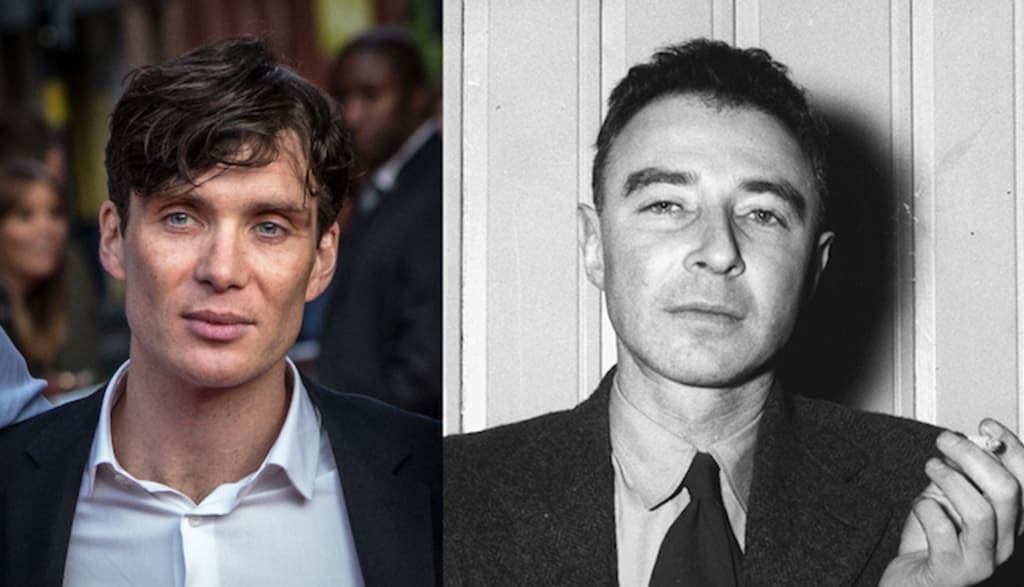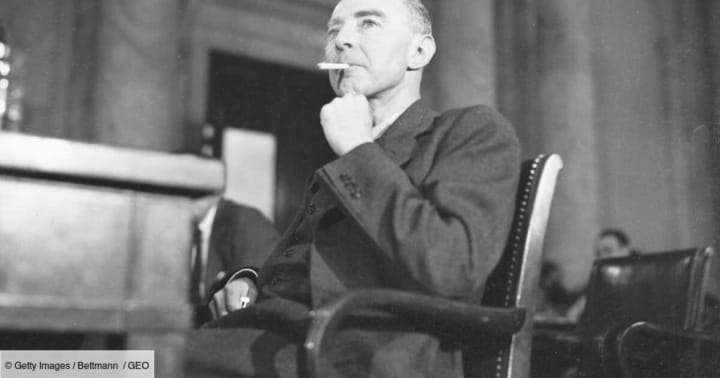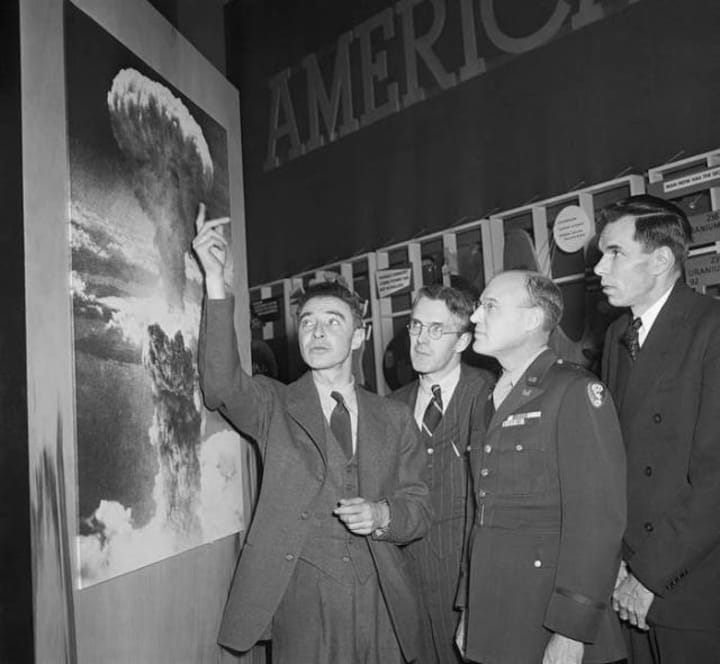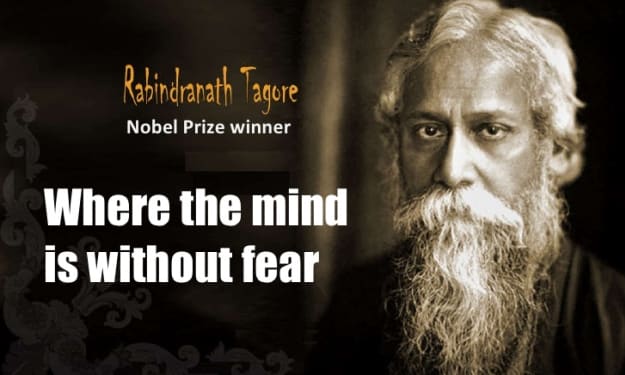J.Robert Oppenheimer(father of atomic bomb)
"Now I am become Death, the destroyer of worlds."

who is he?
J. Robert Oppenheimer was an American theoretical physicist and one of the key figures in the development of the atomic bomb during World War II. He was born on April 22, 1904, in New York City, USA, and passed away on February 18, 1967, in Princeton, New Jersey.
Oppenheimer is best known for his role as the scientific director of the Manhattan Project, a top-secret research program during World War II, which aimed to build the first atomic bomb. His leadership and contributions to the project were essential to its success.
After witnessing the successful test of the first atomic bomb in July 1945, Oppenheimer famously quoted a line from the Hindu scripture, the Bhagavad Gita: "Now I am become Death, the destroyer of worlds."
Despite his significant contributions to the war effort, Oppenheimer's security clearance was revoked in 1954 due to concerns about his associations with left-wing political groups during the 1930s and 1940s. This action came during the era of McCarthyism, a period of intense anti-communist sentiment in the United States.
Following the revocation of his security clearance, Oppenheimer faced personal and professional difficulties, but he remained active in scientific research and education. He continued to contribute to theoretical physics and played a crucial role in the development of the Institute for Advanced Study in Princeton.
Throughout his life, Oppenheimer received numerous honors and awards for his scientific contributions. He is remembered as one of the most important physicists of the 20th century and a key figure in the development of nuclear weapons.

The story Oppenheimer (biography)
J. (Julius) Robert Oppenheimer was born in New York City on April 22, 1904. His parents, Julius S. Oppenheimer, a wealthy German textile merchant, and Ella Friedman, an artist, were of Jewish descent but did not observe the religious traditions. He studied at the Ethical Culture Society School, whose physics laboratory has since been named for him, and entered Harvard in 1922, intending to become a chemist, but soon switching to physics. He graduated summa cum laude in 1925 and went to England to conduct research at Cambridge University's Cavendish Laboratory, working under J.J. Thomson.
In 1926, Oppenheimer went to the University of Göttingen to study under Max Born, obtaining his Ph.D. at the age of 22. There, he published many important contributions to the then newly developed quantum theory, most notably a famous paper on the so-called Born-Oppenheimer approximation, which separates nuclear motion from electronic motion in the mathematical treatment of molecules. In 1927, he returned to Harvard to study mathematical physics and as a National Research Council Fellow, and in early 1928, he studied at the California Institute of Technology. He accepted an assistant professorship in physics at the University of California, Berkeley, and maintained a joint appointment with California Institute of Technology. In the ensuing 13 years, he "commuted" between the two universities, and many of his associates and students commuted with him.
Oppenheimer became credited with being a founding father of the American school of theoretical physics. He did important research in astrophysics, nuclear physics, spectroscopy and quantum field theory. He made important contributions to the theory of cosmic ray showers, and did work that eventually led toward descriptions of quantum tunneling. In the 1930s, he was the first to write papers suggesting the existence of what we today call black holes.
In November 1940, Oppenheimer married Katherine Peuning Harrison, a radical Berkeley student, and by May 1941 they had their first child, Peter. When World War II began, Oppenheimer eagerly became involved in the efforts to develop an atomic bomb, which were already taking up much of the time and facilities of Lawrence's Radiation Laboratory at Berkeley. He was invited to take over work on neutron calculations, and in June 1942 General Leslie Groves appointed Oppenheimer as the scientific director of the Manhattan Project.
Under Oppenheimer's guidance, the laboratories at Los Alamos were constructed. There, he brought the best minds in physics to work on the problem of creating an atomic bomb. In the end, he was managing more than 3,000 people, as well as tackling theoretical and mechanical problems that arose. He is often referred to as the "father" of the atomic bomb. (In 1944, the Oppenheimers' second child, Katherine (called Toni), was born at Los Alamos.) The joint work of the scientists at Los Alamos resulted in the first nuclear explosion at Alamagordo on July 16, 1945, which Oppenheimer named "Trinity."
After the war, Oppenheimer was appointed Chairman of the General Advisory Committee to the Atomic Energy Commission (AEC), serving from 1947 to 1952. It was in this role that he voiced strong opposition to the development of the hydrogen bomb. In 1953, at the height of U.S. anticommunist feeling, Oppenheimer was accused of having communist sympathies, and his security clearance was taken away. The scientific community, with few exceptions, was deeply shocked by the decision of the AEC. In 1963, President Lyndon B. Johnson attempted to redress these injustices by honoring Oppenheimer with the Atomic Energy Commission's prestigious Enrico Fermi Award.
From 1947 to 1966, Oppenheimer also served as Director of Princeton's Institute for Advanced Study. There, he stimulated discussion and research on quantum and relativistic physics in the School of Natural Sciences. Oppenheimer retired from the Institute in 1966 and died of throat cancer on February 18, 1967.
The Manhattan Project:
J. Robert Oppenheimer (1904-1967) was an American theoretical physicist. During the Manhattan Project, Oppenheimer was director of the Los Alamos Laboratory and responsible for the research and design of an atomic bomb. He is often known as the “father of the atomic bomb.”
By the time the Manhattan Project was launched in the fall of 1942, Oppenheimer was already considered an exceptional theoretical physicist and had become deeply involved in exploring the possibility of an atomic bomb. Throughout the previous year he had been doing research on fast neutrons, calculating how much material might be needed for a bomb and how efficient it might be.
Although Oppenheimer had little managerial experience and some troublesome past associations with Communist causes, General Leslie Groves recognized his exceptional scientific brilliance. Less than three years after Groves selected Oppenheimer to direct weapons development, the United States dropped two atomic bombs on Japan. As director of the Los Alamos Laboratory, Oppenheimer proved to be an extraordinary choice.

HIS FAMOUS DIALOGUE
J. Robert Oppenheimer comes from his recollection of witnessing the first successful test of the atomic bomb on July 16, 1945, at the Trinity test site in New Mexico. Oppenheimer famously quoted a line from the Hindu scripture, the Bhagavad Gita, which captures the overwhelming and profound impact of the event. He said:
"Now I am become Death, the destroyer of worlds."
This quote reflects the awe and realization of the immense destructive power that the development of the atomic bomb had unleashed. It also showcases the moral and ethical dilemmas that Oppenheimer and many other scientists involved in the Manhattan Project faced regarding the use of such devastating weapons. The quote has become iconic and is often cited in discussions about the consequences of nuclear technology and warfare
ALL ABOUT OPPENHEIMER (biopic)
All About Oppenheimer
Filmmaker Christopher Nolan writes and directs this 2023 biopic about the father of the Atomic bomb, J. Robert Oppenheimer. Frequent collaborator Cillian Murphy stars as the titular theoretical physicist who designed the bombs that devastated Japan in 1945. Nolan's Atomic Age cast also includes Emily Blunt, Matt Damon, Robert Downey Jr., and Florence Pugh.
https://www.imdb.com/video/vi103334681/?ref_=ext_shr_lnk
About the Creator
Jayanthi Pritha
As a traditional content writer, my passion for language, needs make me an asset for any project. I am eager to continue contributing my skills to tell compelling stories and make a positive impact through the written word.
Enjoyed the story? Support the Creator.
Subscribe for free to receive all their stories in your feed. You could also pledge your support or give them a one-off tip, letting them know you appreciate their work.






Comments
There are no comments for this story
Be the first to respond and start the conversation.